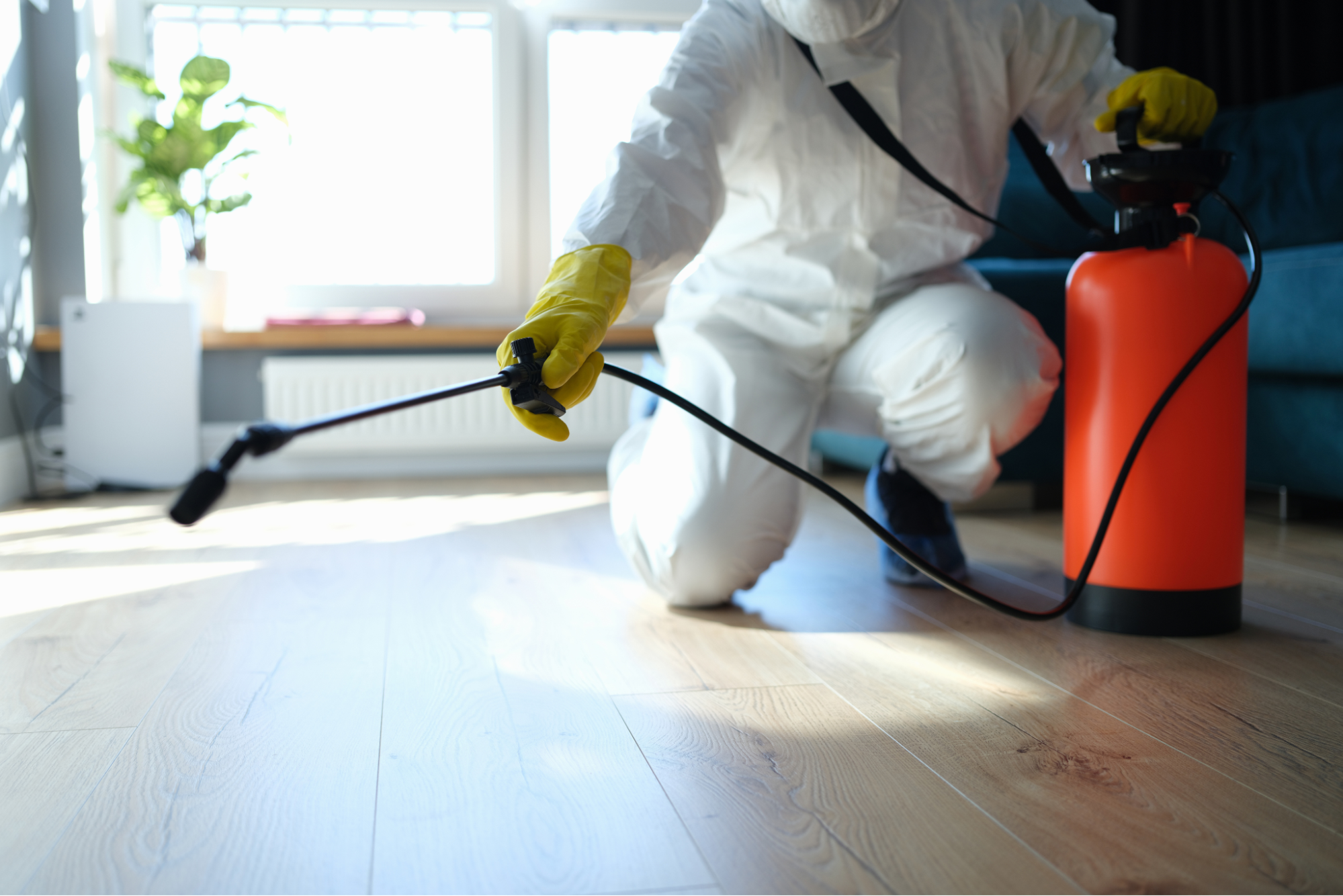Bed Insect Therapy Malfunction: Comparing Chemical Vs. Non-Chemical Solutions
In the world of parasite control, especially when dealing with the consistent concern of bed bugs, the selection between chemical and non-chemical therapy solutions can be a crucial one. Both techniques provide distinct benefits and downsides, affecting aspects such as efficiency, security considerations, and general price. By taking a look at the nuanced details of each approach, a more clear understanding of which course to pursue in attending to a bed pest problem can be acquired.
Performance of Chemical Therapies
Chemical treatments for bed insect invasions have actually been extensively identified for their powerful and quick efficacy in removing these pests. When taking into consideration the efficiency of chemical therapies, it is critical to comprehend that they can provide a extensive and quick solution to a bed pest trouble. Professional pest control operators commonly depend on insecticides to target bed insects at numerous phases of their life process, consisting of grownups, eggs, and fairies. These chemicals typically function by interfering with the bed bugs' nerve system, causing paralysis and ultimate death.
In addition, chemical therapies have the advantage of using recurring results, implying that they can continue to eliminate bed pests also after the first application. This recurring activity is particularly useful in combating any kind of prospective re-infestations. Furthermore, the fast action of chemical therapies can bring alleviation to individuals encountering severe bed insect problems, enabling them to restore control of their space swiftly.
Security Interest In Chemical Solutions
One important facet that calls for careful consideration when using chemical options for bed bug therapy is making certain the safety of occupants and the environment. Exposure to specific chemicals utilized in bed pest treatments can lead to respiratory issues, skin irritability, or other adverse responses, especially in individuals with pre-existing problems or level of sensitivities.
In addition, the environmental effect of chemical solutions is one more significant factor to consider. Some chemicals utilized in bed insect treatments may be damaging to helpful bugs, wild animals, and environments if they leach into the dirt or water supply. It is vital to use chemical therapies sensibly, following safety standards, and thinking about much less poisonous options to alleviate these risks and make certain the risk-free and effective management of bed bug invasions.
Advantages of Non-Chemical Approaches
Taking into consideration the prospective security worries and ecological effect associated with chemical options for bed insect treatment, exploring non-chemical approaches offers an encouraging option with a number of distinct benefits. Non-chemical therapies are eco friendly, as they do not add to air or water pollution, making them a lasting choice for pest control.
Furthermore, non-chemical services can be efficient in targeting bed bugs, including hard-to-reach areas where chemical treatments may not pass through. Methods such as warm therapy, vacuuming, steam cleaning, and mattress coverings provide detailed elimination without the use of harmful chemicals. Additionally, non-chemical approaches can be less disruptive, requiring minimal preparation and enabling quicker reentry into treated locations. Overall, going with non-chemical bed bug treatment methods not only focuses on safety and ecological protection however also makes certain effective and comprehensive parasite control.
Limitations of Non-Chemical Treatments

Additionally, non-chemical therapies typically require multiple applications to achieve effective elimination. This can be lengthy and may not constantly ensure full elimination of all bed pests and their eggs, especially in covert or hard-to-reach areas.
Additionally, the success of non-chemical therapies greatly counts on appropriate application and thoroughness, which can be testing for individuals without specialist expertise. Insufficient application of non-chemical techniques might result in insufficient obliteration, resulting in persistent invasions and the requirement for extra treatments.
For that reason, while non-chemical treatments have their benefits, it is vital to acknowledge look what i found these constraints and consider them when determining the most reliable approach for managing bed insect problems.
Cost Contrast: Chemical Vs. Non-Chemical Options
Offered the limitations associated with non-chemical treatments, a necessary rat problem aspect to assess in the context of bed pest management is the cost contrast between chemical and non-chemical options. Chemical therapies typically involve the application of insecticides by specialists, which can vary from $250 to $900 per space, depending upon the intensity of the invasion and the dimension of the area to be treated. In contrast, non-chemical therapies like warmth therapy or heavy steam can be a lot more costly, with expenses ranging from $1,000 to $6,000 for a whole home. While the initial cost of chemical treatments may appear lower, numerous therapies may be called for to totally eliminate the infestation, potentially enhancing the general cost. On the various other hand, non-chemical choices might provide an extra environment-friendly and lasting solution, although they can be cost-prohibitive for some people. Eventually, when thinking about the cost of bed bug therapy choices, it is essential to consider the upfront expenditures versus the effectiveness and long-lasting sustainability of the selected approach.
Conclusion

Thinking about the potential safety and security worries and ecological influence connected with chemical solutions for bed bug treatment, exploring non-chemical approaches offers a promising option with a number of distinctive advantages.Given the limitations connected with non-chemical treatments, a necessary aspect to review in the context of bed insect administration is the price comparison between chemical and non-chemical choices. In comparison, non-chemical treatments like heat treatment or steam can be a lot more costly, with prices varying from $1,000 to $6,000 for an entire home. While the preliminary price of chemical treatments might seem reduced, several treatments might be needed to completely eradicate the problem, possibly raising the general cost.In final thought, when comparing chemical and non-chemical bed insect treatment choices, it is necessary to think about performance, security, benefits, restrictions, and cost.
Comments on “High Quality A1 Pest Control Services Charlotte - Safeguard Your Home”